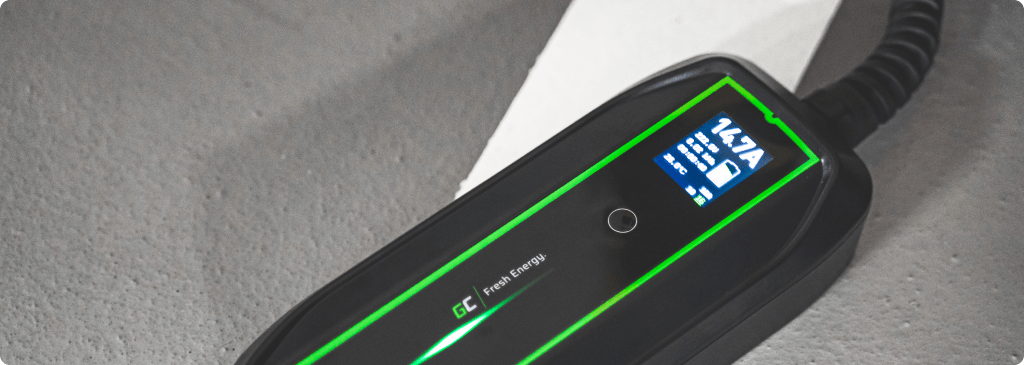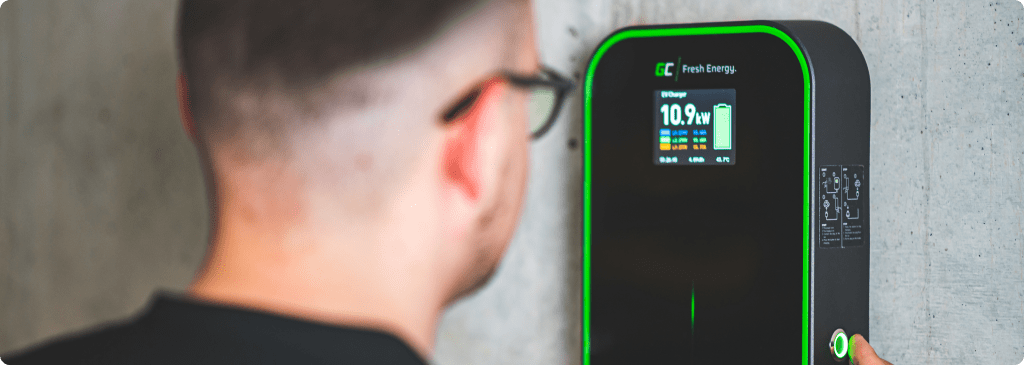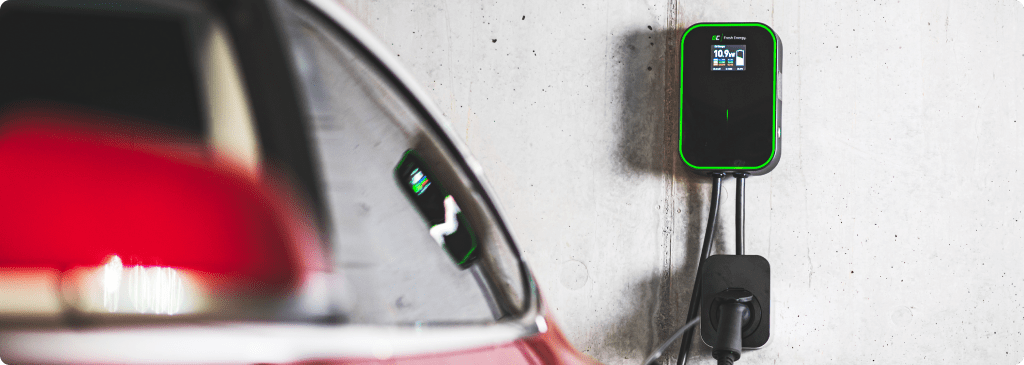Electric cars are gaining popularity. It is no wonder – their users are given additional privileges, such as the ability to use bus lanes or free parking in the city centre. However, this is not the most important thing. The key advantage of “electrics” is the significantly lower cost of operation. Driving 100 km in such a car is an costs about PLN 8-15. However, you must remember to charge the device. How to do it in your own garage?
Electric cars must be charged independently. This is the biggest challenge compared to petrol or diesel vehicles. Does this mean that electric cars are risky because they can just “stop in the middle of the road” without access to a power source? Absolutely not! All you need to do is take advantage of the ability of charging the vehicle at home and set off on the road with a full or well-charged battery.

How to charge an electric car in a garage?
Sooner or later, the battery in an electric car has to be recharged. You can do it in your home garage. How? There are two solutions to choose from.
- Connecting the electric car to a standard 230 V socket with a 2.3 kW power output. This is the easiest way out of the situation – available almost immediately. Just use the right cable and you’re done. The problem is that you have to be really patient with it. Recharging a Tesla with a 85 kWh battery capacity from zero can take up to 48 hours! Of course, if you are driving shorter distances, a 10-12 hour charging break may be enough to travel, for example, from home to work and back.
- Getting a modern Wallbox type charger, designed to power electric and hybrid vehicles. Thanks to this device plugged into a power outlet with a higher supplied current output, you can charge the battery in your vehicle much faster.


Why should you consider investing in a garage charger for an electric car?
An electric car can be charged not only at home, but also on the road. However, this can be quite a challenge for two reasons. First of all, the network of electric vehicle charging stations in Poland is not yet well developed. This means that it can be difficult to find a power source on the go – even in a big city. And it may just turn out that the charging station is already occupied by another car.
The second issue is the time it takes to charge the battery. Even if you find a fast charging station, the process of “filling up” the battery’s cells may take from several dozen minutes to even several hours.
Meanwhile, when you are at home, you can connect the vehicle to the charger for many hours, e.g. overnight. As a result, you don’t have to stress that you will run out of energy even on a longer route.


How long does the battery in an electric car last?
The distances that can be covered with an electric car on a single charge are constantly increasing. A few years ago, the standard was approx. 160-200 km. Today, the latest Tesla models allow you to drive up to approx. 630 km! Assuming that you only use the car for daily driving, or that you are embarking on a long journey, on which you will have an even longer stop – charging will never be a problem – especially if you equip yourself with a garage charger.
What distinguishes Wallbox electric car chargers?
A wallbox type charger is a simple and effective solution that makes charging an electric vehicle faster and safer. Devices such as the GC EV PowerBox 22kW, available at SwiatBaterii.pl, allow you to significantly speed up the battery charging process – even with a power output of up to 22 kW.
It is worth remembering that this power depends on the parameters of the current supplied from the grid. If there is, for example, an 11 kW power socket in your garage, this is the power with which energy will flow from the Wallbox to your car. Even the combination of this device with a 7.2 kW installation gives a huge advantage. The aforementioned Tesla will be fully charged not in 48 hours, but in 25% of that time, and e.g. the Peugeot e-208 engine in 6.5 hours.
If you already have access to 22 kW, you can expect a Tesla to charge in approx. 7h, and the mentioned Peugeot e-208, in as little as 4.5 hours.
In addition, wallbox chargers:
- are convenient to use – equipped with a permanently attached cable with a type 2 connector, they fit most electric and hybrid drives, and allow for express connection,
- have a 3-phase connection, which ensures their efficient installation,
- can be adapted to the type of power supply – for example, if you now have a 7.2 kW power socket, but you plan to increase these parameters in the future, you don’t have to worry. The charger will work with even better efficiency.
Remember: if your car works with a cable other than Type 2, you can choose, for example, a GC EV PowerBox 22 kW charger with a Type 2 socket – then you can plug a properly matched cable into it and connect the car safely and efficiently.
As you can see, although charging an electric car may seem like a challenge, in fact, all you need is to invest in a good wallbox charger and provide the car with power in a home garage. Thanks to this, you will be able to go on the road with a full battery and without having to search for a place to charge.
Alexandra Smith
Related posts
Most viewed entries
- Polish Inventors Who Changed the World – Do You Know Them All?
- The Scariest Myths About Electronic Devices – Halloween 2024
- The history of bicycle – International Bicycle Day
- Electricity in a camper van on holiday – a conundrum easily solve
- Off-grid installation on a plot. Is it worth it?
- Charging your electric car at home without a wallbox

